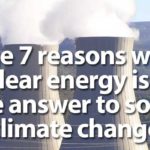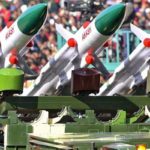Nuclear power went backwards last year with the permanent shutdown of nine power reactors and the startup (grid connection) of six. Startups were concentrated in Russia (three) and China (two), with one in South Korea. The shutdowns were spread across eight countries.
Worse still for the industry – much worse – is the paucity of reactor construction starts. There were just three construction starts in 2019 (totaling 3.2 GW): one each in China and Russia, and Bushehr-2 in Iran which faces an uncertain future. No countries entered the nuclear power club in 2019 (construction starts or grid connections).
The average age of the global reactor fleet passed 30 years in 2019. That’s an old fleet, increasingly prone to accidents, large and small; increasingly prone to extended outages and thus increasingly uncompetitive in electricity markets.
As a result of the ageing of the reactor fleet, the International Atomic Energy Agency (IAEA) anticipates the closure of up to 139 GW from 2018?2030 – more than one-third of current global capacity of 395 GW (including idle reactors in Japan). Based on IAEA figures, the industry will need about 10 new reactors (10 GW) each year just to match shutdowns.
The industry did indeed average nearly 10 construction starts from 2008?13. But the number has sharply declined in the aftermath of the Fukushima disaster and catastrophic cost overruns. There were more construction starts in 2010 (16) than in 2016?19 combined (15).
This table captures the birth, mid-life crisis (Fukushima) and death of the nuclear power mini-renaissance:
| 6-year period | 2002-07 | 2008?13 | 2014?19 |
| Construction starts | 24 | 59 | 26 |
| Average | 4.0 | 9.8 | 4.3 |
Diana Ürge-Vorsatz, Vice-Chair of an Intergovernmental Panel on Climate Change Working Group, notes in the foreword to the World Nuclear Industry Status Report 2019:5
“Trend indicators in the report suggest that the nuclear industry may have reached its historic maxima: nuclear power generation peaked in 2006, the number of reactors in operation in 2002, the share of nuclear power in the electricity mix in 1996, the number of reactors under construction in 1979, construction starts in 1976. As of mid-2019, there is one unit less in operation than in 1989.”
The number of power reactors under construction has been falling slowly but steadily in recent years, from 68 in 2013 to 46 as of Jan. 2020 (52 according to the IAEA).
The Era of Nuclear Decommissioning
Currently, nuclear power reflects two contradictory dynamics. The earlier mini-renaissance is evident but will subside by the mid-2020s. The Era of Nuclear Decommissioning is in its infancy (with nine reactor closures, historians may mark 2019 as the beginning of this qualitatively new era) and will be in ever-sharper focus by the mid-2020s.
The Era of Nuclear Decommissioning will be characterised by a decline in the number of operating reactors; an increasingly unreliable and accident-prone reactor fleet as aging sets in; countless battles over lifespan extensions for aging reactors; an internationalisation of anti-nuclear opposition as neighbouring countries object to the continued operation of aging reactors; and escalating battles over and problems with decommissioning and waste disposal.
Until such time as the rot sets in, the nuclear industry can console itself with these 10-year figures indicating a marginal increase or decrease depending on whether reactors in long-term outage (most of them in Japan) are included or excluded. Including reactors in long-term outage is “misleading” and “clearly ridiculous” according to former World Nuclear Association executive Steve Kidd, because many of them may never operate again.
| Year | Number of operable reactors | Capacity (GW) |
| 31 Dec. 2009 | 437 | 371 |
| 31 Dec. 2019Including reactors in long-term outageExcluding reactors in long-term outage | 442415 | 392~366 |
Pro-nuclear spin
So how are the nuclear industry and its supporters responding to the industry’s miserable state? Mostly with denial and delusion.
Here are the ‘top 6 nuclear power achievements‘ of 2019 according to the executive editor of POWER magazine.
- World’s first EPR nuclear power plant enters commercial operation with the Sept. 2019 commencement of commercial operation of the second of two EPR reactors in Taishan, China.
The original 2013/14 startup dates for Taishan 1 and 2 were missed by five years due to construction problems and safety concerns (including the extraordinary Creusot Forge scandal in France). Excavation work for the Taishan reactors began in 2008 and construction of the two reactors formally began in 2009 and 2010. China General Nuclear Power Corporation acknowledged a cost increase of 40 percent for the two Taishan reactors to US$11 billion. As a result of delays and cost overruns, the market for EPRs in China has all but evaporated.
The EPR reactor under construction at Flamanville, France, is 10 years behind schedule: construction began in Dec. 2007, the planned startup date was 2012, and EDF now says that commercial operation cannot be expected before the end of 2022. The current cost estimate of €12.4 billion (US$13.7 billion) is 3.8 times greater than the original estimate of €3.3 billion (US$3.6 billion).
The EPR reactor under construction at Olkiluoto, Finland, is 10 years behind schedule: construction began in April 2005, startup was anticipated in 2010, and startup is now scheduled in 2020. The current cost estimate of about €11 billion(US$12.2 billion) is 3.7 times greater than the original €3 billion (US$3.3 billion) price tag.
The estimated combined cost of the two EPR reactors under construction at Hinkley Point, UK, including finance costs, is £26.7 billion (US$35.0 billion) (the EU’s 2014 estimate of £24.5 billion plus a £2.2 billion increase announced in July 2017). A decade ago, the estimated construction cost for one EPR reactor in the UK was almost seven times lower at £2 billion. The UK National Audit Office estimates that taxpayer subsidies for Hinkley Point will amount to £30 billion (US$39.4 billion), while other credible estimates put the figure as high as £50 billion (US$65.6 billion).
Undeterred, POWER magazine claims that a 6-unit EPR project in India will be the world’s largest nuclear power plant “if completed as planned”. It would be a miracle if the project is completed as planned; indeed it would be a minor miracle if it even begins given funding constraints.
- World’s first ACPR-1000 nuclear power plant begins commercial operation in China
Grid connections of ACPR-1000 reactors in China in 2018 and 2019 mark a significant achievement. But the broader picture is highly uncertain. There has only been one reactor construction start in China in the past three years. The number of reactors under construction has fallen sharply from 20 in 2017 to 10 currently. No-one knows whether or not the Chinese nuclear program will regain momentum. Wind and solar combined generated nearly double the amount of electricity as nuclear in 2018.
- Akademik Lomonosov connects to grid
Estimated construction costs for Russia’s floating nuclear power plant (with two 32-MW ice-breaker-type reactors) increased more than four-fold and eventually amounted to well over US$10 million / megawatt (US$740 million / 64 MW). A 2016 OECD Nuclear Energy Agency report said that electricity produced by the plant is expected to cost about US$200 / MWh, with the high cost due to large staffing requirements, high fuel costs, and resources required to maintain the barge and coastal infrastructure.
The primary purpose of Russia’s floating nuclear power plant is to help exploit fossil fuel reserves in the Arctic – fossil fuel reserves that are more accessible because of climate change. That isn’t anything to celebrate; it is disturbing and dystopian.
- Vogtle nuclear expansion progresses
Construction of the twin-AP1000 project in the US state of Georgia began in 2013 and the planned startup dates were April 2016 and April 2017. The project is 5.5 years behind schedule and it is unlikely that the revised completion dates of Nov. 2021 and Nov. 2022 will be met.
In 2006, Westinghouse claimed it could build one AP1000 reactor for as little as US$1.4 billion. The current cost estimate for the two Vogtle reactors – US$27?30+ billion – is 10 times higher.
The Vogtle project only survives because of mind-boggling, multi-billion dollar taxpayer subsidies including US$12+ billion in loan guarantees, tax credits and much else besides. Westinghouse declared bankruptcy in 2017, largely as a result of its failed AP1000 projects in South Carolina (abandoned after the expenditure of at least US$9 billion) and Georgia, and Westinghouse’s parent company Toshiba was almost forced into bankruptcy and survives as a shadow of its former self.
- NRC approves Clinch River nuclear site for small modular reactors (SMRs)
- NuScale’s SMR design clears Phase 4 of NRC review process
But who will pay for SMRs? Industry won’t budge without massive taxpayer subsidies. A 2018 US Department of Energy report states that to make a “meaningful” impact, about US$10 billion of government subsidies would be needed to deploy 6 gigawatts of SMR capacity by 2035.
And the pro-nuclear authors of a 2018 article in the Proceedings of the National Academy of Science argue that for SMRs to make a significant contribution to US energy supply, “several hundred billion dollars of direct and indirect subsidies would be needed to support their development and deployment over the next several decades”.
The prospects for SMRs are just as bleak in other countries.
And as the AEMO/CSIRO GenCost 2019-20 report notes, SMRs in Australia would be 2-4 times more expensive per kW than wind and solar.
Dr. Jim Green is the national nuclear campaigner with Friends of the Earth Australia and editor of the Nuclear Monitor newsletter.
Source: https://reneweconomy.com.au/nuclear-power-went-backwards-in-2019-and-the-outlook-is-bleak-61834/


